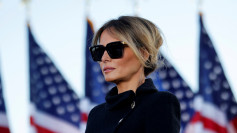President Donald Trump on Thursday signed an order authorizing reciprocal tariffs on U.S. trading partners, a move that could reshape global trade dynamics and escalate economic tensions with key allies and competitors. The directive, which aims to impose tariffs equivalent to those foreign nations charge on U.S. goods, introduces significant uncertainty for businesses and consumers while raising the prospect of retaliatory measures from trading partners.
"I've decided for purposes of fairness that I will charge a reciprocal tariff," Trump said in the Oval Office while signing the proclamation. "It's fair to all. No other country can complain."
The move is expected to generate significant debate over its economic consequences. While the White House contends that the tariffs will equalize competition between U.S. and foreign manufacturers, critics warn that they could lead to higher costs for American consumers and businesses. Under existing trade laws, these import taxes would likely be passed on in the form of price increases, potentially exacerbating inflation.
Commerce Secretary nominee Howard Lutnick stated that the administration's study on reciprocal tariffs could be finalized by April 1, at which point Trump could move forward with implementation. "Countries might also lower their tariffs, which would cut costs for consumers," Lutnick said, presenting a potential alternative outcome to an escalating trade war.
The specifics of Trump's plan remain unclear, including which nations and products would be targeted and when the tariffs would take effect. A White House fact sheet highlighted India's high tariffs on U.S. motorcycles and Brazil's duties on ethanol as examples of unfair trade practices, suggesting those countries could be among the first affected.
The announcement immediately reignited fears of a broader trade confrontation. Trump said his administration considers Europe's value-added tax (VAT) to be "the same as a tariff," raising the possibility of a new transatlantic trade battle. He also asserted that the tariffs would generate a "staggering amount" of revenue, a claim that remains highly debated among economists.
A senior White House official, speaking on condition of anonymity, said expected tariff revenues could help offset the projected $1.9 trillion federal budget deficit. However, Scott Lincicome, a trade expert at the Cato Institute, warned that the policy is likely to backfire. "It will inevitably mean higher tariffs, and thus higher taxes for American consumers and manufacturers," Lincicome said. "Trump's tariff plan reflects a fundamental misunderstanding of how the global economy works."
The administration's stance on trade has already led to heightened tensions with key partners. Trump previously imposed an additional 10% tariff on Chinese imports, citing the country's role in fentanyl production. His administration has also readied tariffs on Canada and Mexico that could take effect in March, following a 30-day suspension. In addition, the president removed exemptions from his 2018 steel and aluminum tariffs, further straining relations with the European Union.
Foreign governments have already signaled they are prepared to respond in kind. The EU, Canada, and Mexico have countermeasures in place to impose economic penalties on U.S. goods. China, which has already retaliated with tariffs on U.S. energy and agricultural products, has also launched an antitrust investigation into Google.
Trump defended his decision by arguing that past administrations failed to address unfair trade practices and allowed foreign governments to take advantage of the U.S. market. "Nobody really knows what is going to happen," he said, "other than we know that jobs are going to be produced at levels that we haven't seen before."
However, financial analysts have expressed concern that the tariff plan could undermine economic growth. A report from Wells Fargo suggested that higher trade barriers could slow economic expansion in 2025, even as tax cuts scheduled for 2026 might provide a boost. The report cautioned that trade disruptions could stifle investment and hiring at a time when inflationary pressures are already mounting.






